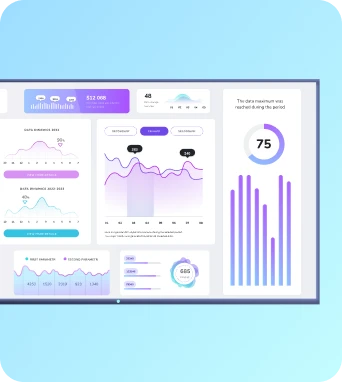Built-in color correction
Built-in colour correction is a Fugo feature that automatically aligns colour output across TV dashboards and digital signage players. It applies calibration profiles, white balance and gamma adjustments, plus per-screen offsets, to maintain consistent, accurate brand colours, reduce visual drift and simplify large-scale display management and maintenance.
Built-in colour correction
How built-in colour correction works
Built-in colour correction operates as a layered process that combines global profiles with per-device adjustments. At the core is a reference profile — a target set of colour values and response curves that represent the intended appearance for logos, photography and video. Administrators define or select these profiles in the Fugo console; the system then translates them into device-compatible instructions. Translation considers each player’s capabilities, whether the hardware accepts ICC profiles, LUTs or a simplified set of offsets for white balance and gamma. Where possible, the correction uses multi-point lookup tables (LUTs) to provide finer control over complex colour mappings; where hardware is limited it applies scaled offsets and gamma compensation to approximate the reference appearance. Correction can run as an automatic background task or as a scheduled routine during off-hours. On installation, a baseline calibration profile can be pushed to new devices to reduce initial variance. For devices with sensors or connectivity that supports measurement feedback, Fugo can ingest remote telemetry about ambient light or panel behaviour and adapt corrections dynamically. The system also supports device-specific overrides when a single screen requires bespoke tuning due to aging panels, non-standard mounts or unusual viewing angles. All changes are logged and visible in the dashboard, enabling IT teams to audit corrections, compare before-and-after visuals and roll back updates if necessary. The architecture is designed to be resilient: if a player is offline, it maintains the last-applied profile locally and re-synchronises automatically when connectivity returns.
Profiles, compatibility and deployment considerations
Profiles are central to effective colour correction, and selecting the right approach depends on the deployment size and the visual demands of the content. In small, high-fidelity installs such as digital art exhibits or premium retail displays, administrators often use full ICC or 3D LUT workflows to ensure exact colour reproduction. These workflows require hardware and players that accept LUT uploads and a process for measurement, either through on-site colorimeters or through vendor-provided panel profiles. For larger multisite networks, a pragmatic approach combines a standardised global profile with per-screen offsets to balance consistency and manageability. Fugo supports both approaches, letting operators classify devices by capability and assign profiles accordingly, so constrained players use simplified adjustments while capable players receive richer LUT-based corrections. Compatibility considerations include the player firmware, display panel technology and whether the screen supports hardware-level colour settings. Before broad rollout, test the correction process on representative devices and lighting conditions to build a profile library that covers typical scenarios. Scheduling corrections during low-traffic windows minimises viewer disruption and ensures that temporary conditions, such as direct sunlight or maintenance lighting, do not introduce unwanted calibration states. In the field, monitoring tools exposed by Fugo help detect screens that drift beyond acceptable tolerances, signalling maintenance or replacement. IT teams should also plan for firmware updates and changes in content types; new codecs and HDR content can affect perceived colour and may require profile adjustments. Documentation of profiles, measurement methods and rollback procedures improves operational reliability and reduces the risk of inconsistent branding across locations.
Best practices and troubleshooting
Keep the learning going...
Browser-based tools
Browser-based tools are web applications and in-browser utilities that let teams design, manage and preview digital signage and TV dashboards without installing native software. They enable content creation, scheduling, monitoring and integrations through a browser, supporting remote updates and rapid iteration across distributed display networks.
Built-in AI analytics
Built-in AI analytics refers to onboard machine-learning capabilities within a signage platform that automatically collect and analyze viewer and display performance data—such as audience size, attention time, content engagement, and playback health—delivering real-time insights, automated reports, and actionable recommendations to optimize scheduling, content, and network reliability without external tools.
Built-in media players
Built-in media players are software components or firmware embedded in commercial displays and smart TVs that decode, schedule and render digital signage content without the need for external hardware. They support common codecs, handle playlists and basic remote management, and simplify deployments for TV dashboards and workplace displays managed through platforms like Fugo.ai.



